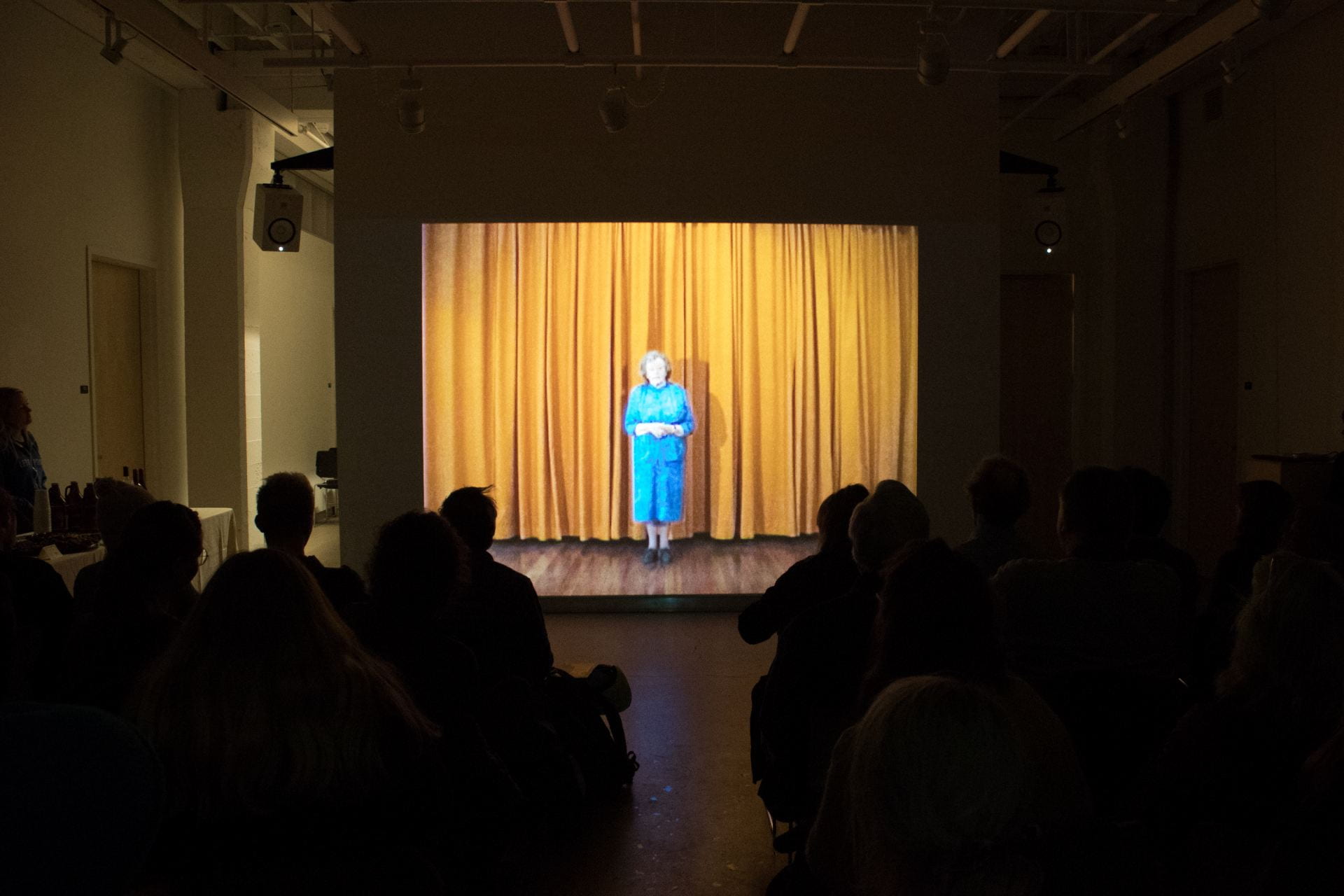
Film screenings and discussion with Miriam Gossing & Lina Sieckmann, and Euan Macdonald
Thursday, February 28th, 2019
510 Oak St, Eugene OR 97401
“Desert Miracles” by Gossing Sieckmann
“Healer” by Euan Macdonald
Discussion Convener: Emily Eliza Scott, UO Assistant Professor of Art History and Environmental Studies
__
Miriam Gossing & Lina Sieckmann’s ‘Desert Miracles’ is a cinematic exploration of a commercialized architecture of desire. Across 22 different tableaus, the film meditates upon the interiors of Nevada’s wedding chapels considering how the excessive scenery opens up to constitute a cultural organisation of “Love”. A woman’s voice is heard reading out an ambiguous letter to an unknown lover, in which she finds herself troubled by the challenges of modern relationships, unable to negotiate a balance between self-fulfillment and optimization. The text is based on anonymous posts by different women in various internet wedding forums. One fictional female character is composed out of many assembled perspectives on desire, relationships and social expectation.
In Euan Macdonald’s video work “Healer”, the power of belief is in question: is psychic healing a kind of trickery or, can viewers allow themselves to believe that they are witnessing a magical moment; that this woman is capable of emitting psychic energy that has the power to heal? As Giorgio Verzotti notes, “Macdonald’s art seems to question the real meaning of things, beginning with the presupposition that their images are inherently deceptive, indeed that they are all connected within a single network of relationships based on illusions.”
Images: 1.) Miriam Gossing & Lina Sieckmann, “Desert Miracles” film still, 2015, 11:40 min. 16mm to HD, 2.) Euan Macdonald, “Healer” film still, 2002, 5:30 min
Special thanks to the Department of German & Scandinavian and the German Studies Committee in conjunction with their international conference on Feminism/Theory/Film.
Miriam Gossing & Lina Sieckmann have studied at the Academy of Media Arts Cologne under Matthias Müller, Phil Collins, Sophie Maintigneux and Beate Gütschow, as well as at the Kunstakademie Düsseldorf under Rita Mc Bride. As an artist duo they have made several experimental films on 16-mm film, in which urban and private architecture, hyper-staged environment, and the notion of desire are examined – combining documentary imagery with fiction and found footage.Their work is shown internationally in exhibitions and film festivals (e.g. Hamburger Bahnhof – Museum für Gegenwart Berlin, International Short Film Festival Oberhausen, Videonale, Kunstmuseum Bonn, Anthology Film Archives New York City). They have been awarded with numerous prizes and scholarships, amongst them the Wim-Wenders-Stipendium, the German Short Film Prize and the Nomination for the Preis der Nationalgalerie für Filmkunst.
Euan Macdonald, born Edinburgh, Scotland, has had numerous solo shows in international museums and galleries including ASU Art Museum; The Hayward Gallery, London; Kunstbunker Kinstverein, Nuremberg; andObjectif Exhibitions, Antwerp Belgium. as well as group exhibitions at Rockbund Art Museum, Shanghai, Para Site, Hong Kong, The Henry Art Gallery, Seattle; Sculpture Center, Queens, NY; The Wattis Center for Contemporary Art, San Francisco; MAT Contemporary art center, Nagoya, Japan; Seville Biennale, Museo Tamayo, Mexico City; The New Museum of Contemporary Art, NY; and 010101: Art in Technological Times, SF MoMA.
Emily Eliza Scott, an Assistant Professor in the History of Art and Architecture & Environmental Studies at the University of Oregon, is an interdisciplinary scholar, artist, and former park ranger focused on contemporary art and design practices that engage pressing (political) ecological issues, often with the intent to actively transform real-world conditions. Her writings have appeared in Art Journal, Art Journal Open, American Art, Third Text, The Avery Review, Field, and Cultural Geographies as well as multiple edited volumes and online journals; she is also coeditor of Critical Landscapes: Art, Space, Politics (University of California Press, 2015). At present, she is developing a monograph on contemporary art and geological imaginaries; a coedited volume on art, visual culture, and climate change; and new courses on land art, Anthropocene debates, and “unnatural disasters.” She is also a core participant in two long-term, collaborative art projects: the Los Angeles Urban Rangers (2004-) and World of Matter (2011-). Her work has been supported by major grants/awards from Creative Capital, the College Art Association, Graham Foundation, American Council of Learned Societies, Luce Foundation, Smithsonian American Art Museum, Annenberg Foundation, and Switzer Foundation.



